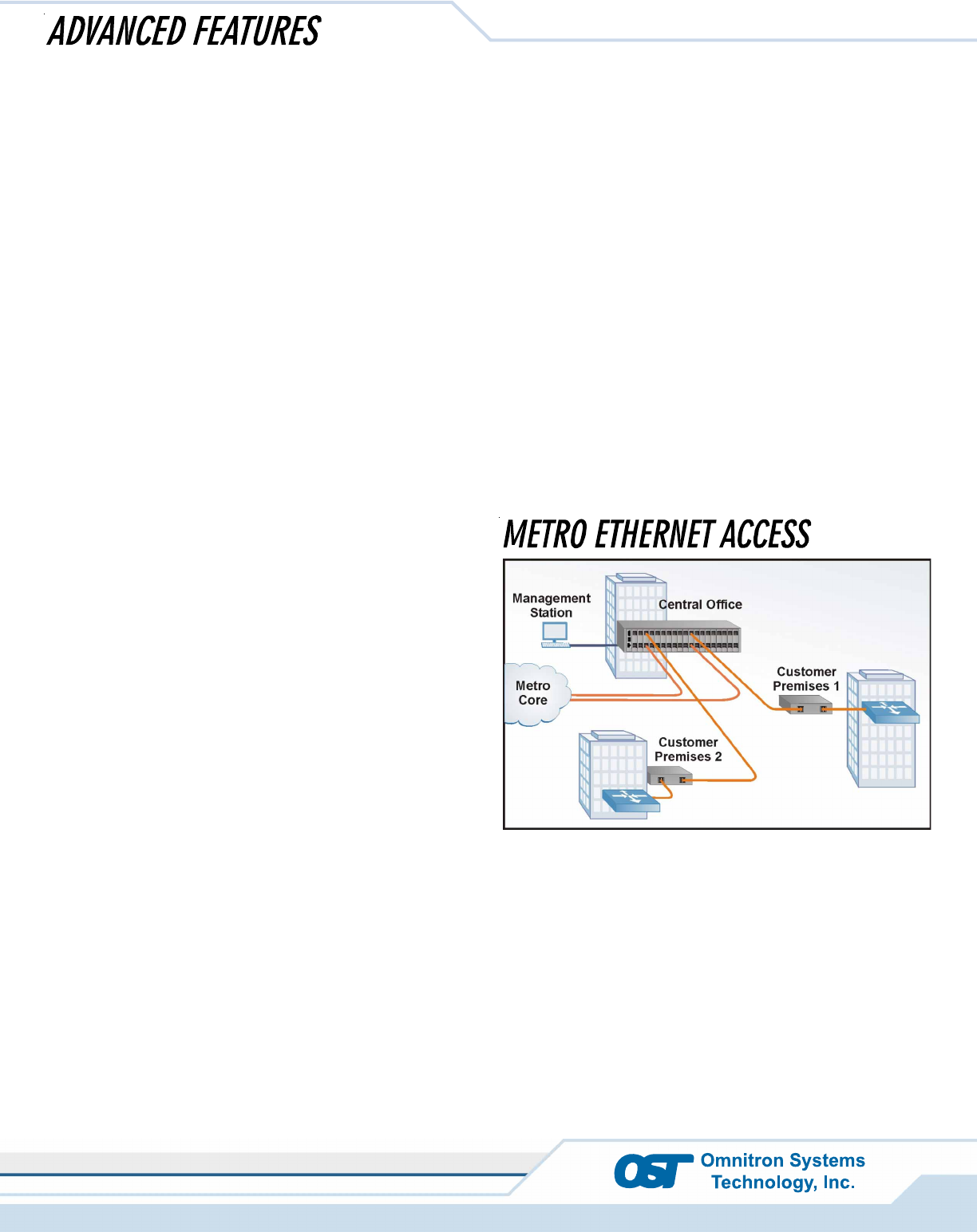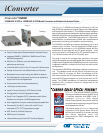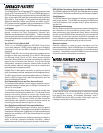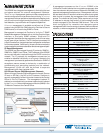
Fiber Port Options
The 2GXM2 Small Form Pluggable (SFP) model supports a wide
variety of SFP transceivers for FTTX and CWDM applications.
SFP fiber transceivers are available with multimode (MM) dual
fiber, single-mode (SM) dual fiber and single-mode single-fiber
(SF) options. They support LC connectors with distances up to
550m over MM fiber, 140km over SM fiber and 40km over SF.
SFP transceivers are available in 20nm increments from 1270nm
to 1610nm to support FTTX and CWDM applications.
Link Modes
The 2GXM2 features multiple, user-selectable link fault detection
modes, including Link Fault Propagation, Remote Fault
Detection and Asymmetrical Fault Detection. These Link Modes
provide rapid fault detection and isolation by monitoring the state
of the cabling hardware, and operate independently of the network
management.
Tag VLAN, Port VLAN and QoS
The
iConverter 2GXM2 supports the IEEE 802.1Q tag Virtual
Local Area Network (VLAN) packet tagging and untagging
(including Q-in-Q) and the 802.1p Quality of Service priority
standards.
2GXM2 VLAN 802.1ad tunneling technology enables service
providers to offer their customers E-Line and E-LAN services
(via Ethernet Virtual Circuit or EVC), which connect multiple
business LANs at different locations and make their networks
appear to be on the same local network. Q-in-Q Service tags
transparently transports customer network traffic across the
service provider network, isolating it from other customer and
service provider management traffic.
2GXM2 Port VLAN enables the ability to specify and restrict
traffic flow between the fiber, backplane and management ports.
The 802.1p prioritization standard enables delivery of Quality of
Service (QoS) to high-priority, real-time applications such as
voice and video over Ethernet.
Port Bandwidth Control and Port Access Control
The enhanced Bandwidth Control feature supports levels of
bandwidth between the fiber ports in 64Kbps increments from
64K to Full Line Speed.
The 2GXM2 features Port Access Control which blocks user
service while maintaining the network link. Port Access Control
enables the service provider to control user access while
maintaining port configuration for easy disabling or enabling of
customer service. Port Access Control provides enterprise
administrators the capability to improve network security by
controlling port access when the port is not in use.
Port Statistics and Optical Performance Statistics
The 2GXM2 supports reporting of utilization, port and optical
performance statistics. Port statistics are available for 38 different
variables for the fiber ports. Additionally, full optical performance
statistics are available on SFP fiber transceivers with a digital
diagnostic bus.
Port and optical performance statistics reporting provides the
ability to monitor customer bandwidth utilization, network
performance and the link signal quality for each individual port.
IEEE 802.3ah Operations, Administration and Maintenance
The 2GXM2 supports the IEEE 802.3ah OAM standard, including
Fault Detection, Performance Monitoring and Remote Loopback.
Fault Detection
The 2GXM2 detects and indicates link failures, dying gasp and
other critical events. The 2GXM2 also supports Unidirectional
Link Fault Detection that indicates faults in either direction of
the fiber link.
Performance Monitoring
802.3ah Performance Monitoring tools are used for the detection
and notification of link performance (quality) faults. Ethernet
data performance can deteriorate slowly before disrupting
service, and the 2GXM2 allows the setting of error-per-second
thresholds. Once the pre-set error threshold is exceeded, an
event notification is generated that provides early indication of a
problem that may be resolved prior to loss of service.
Remote Loopback
Remote Loopback is used for fault localization and link
performance testing. When a 2GXM2 port is in loopback mode,
all received service traffic is looped back and transmitted back
unaltered. The statistics from the 2GXM2 port and the remote
link partner can be compared for consistency.
At the Central Office, the 2GXM2 plug-in module is installed
in a managed iConverter 19-Module chassis providing
high-density fiber access. At Customer Premises 1 and 2,
the 2GXM2 standalone NID provides a fiber uplink port for
intelligent demarcation of Ethernet services.
Page 2






